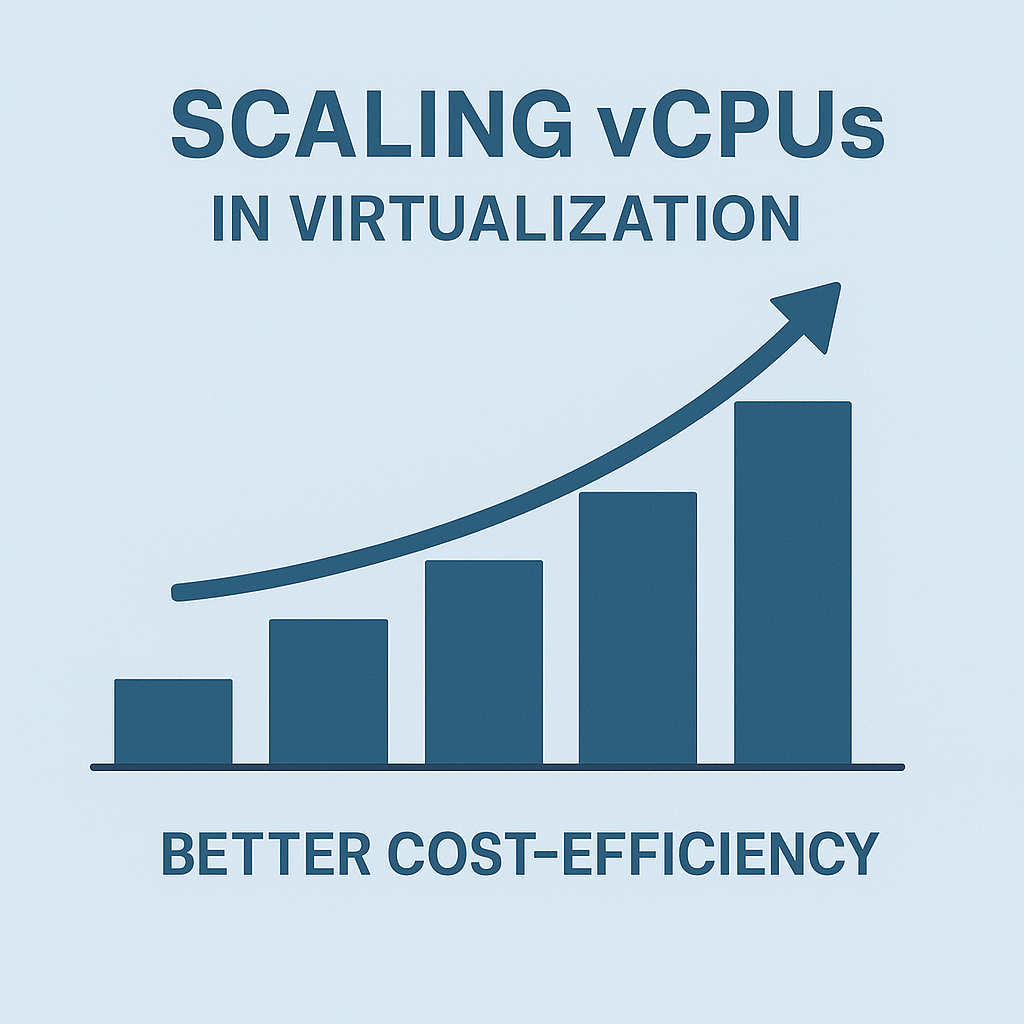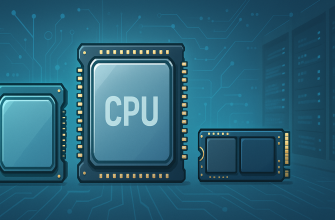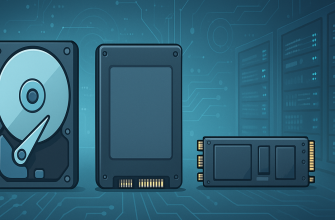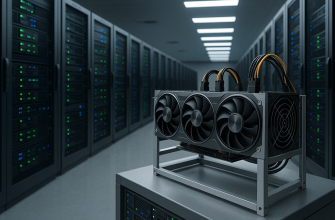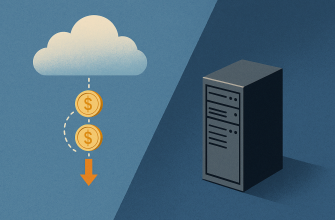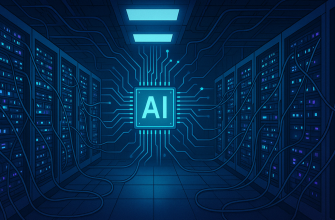What is a Virtual Processor or vCPU?
In today’s cloud-driven world, the term vCPU (virtual Central Processing Unit) is everywhere — from pricing tables on AWS to technical specs on virtualization platforms. But what does it actually mean?
In this article, we’ll break down what a virtual processor is, how it differs from a physical CPU, and why understanding vCPUs is essential when managing virtual machines or cloud infrastructure.
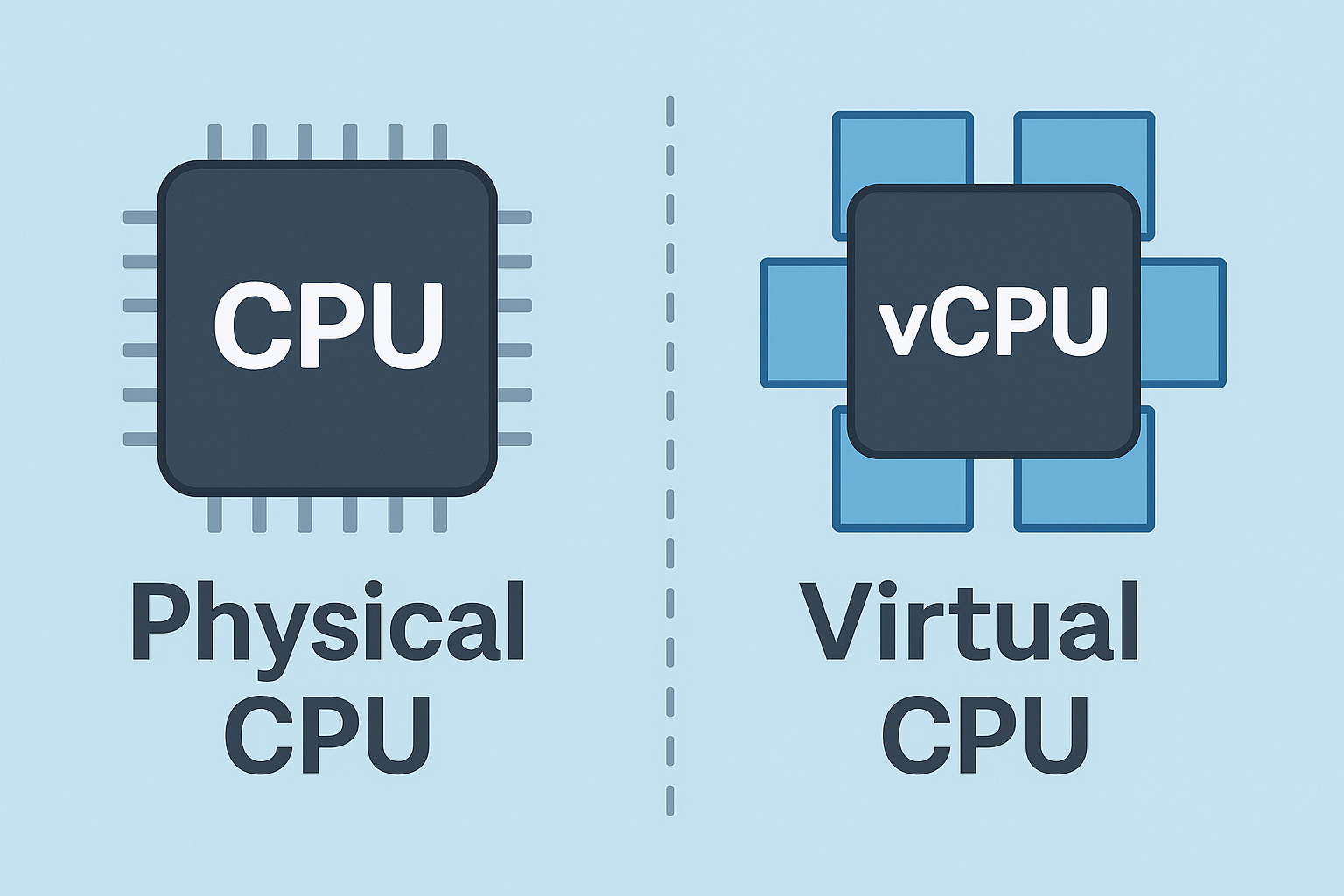
What is a vCPU?
A virtual processor (vCPU) is a portion of a physical processor allocated to a virtual machine. It functions like a dedicated processor from the VM’s perspective, but in reality, it shares time and resources with other vCPUs on the same physical server.
Hypervisors like VMware ESXi, KVM, or Microsoft Hyper-V manage this distribution, letting multiple VMs share CPU resources efficiently.
How vCPUs Work
Let’s say a server has a 4-core physical CPU. With hyper-threading enabled, this can present 8 threads to the system. These threads can be assigned to VMs as vCPUs. A single VM might use 1, 2, or even 8 vCPUs depending on its configuration.
Each vCPU is scheduled to run on an available thread, which means actual execution is managed by the hypervisor depending on workload demand.
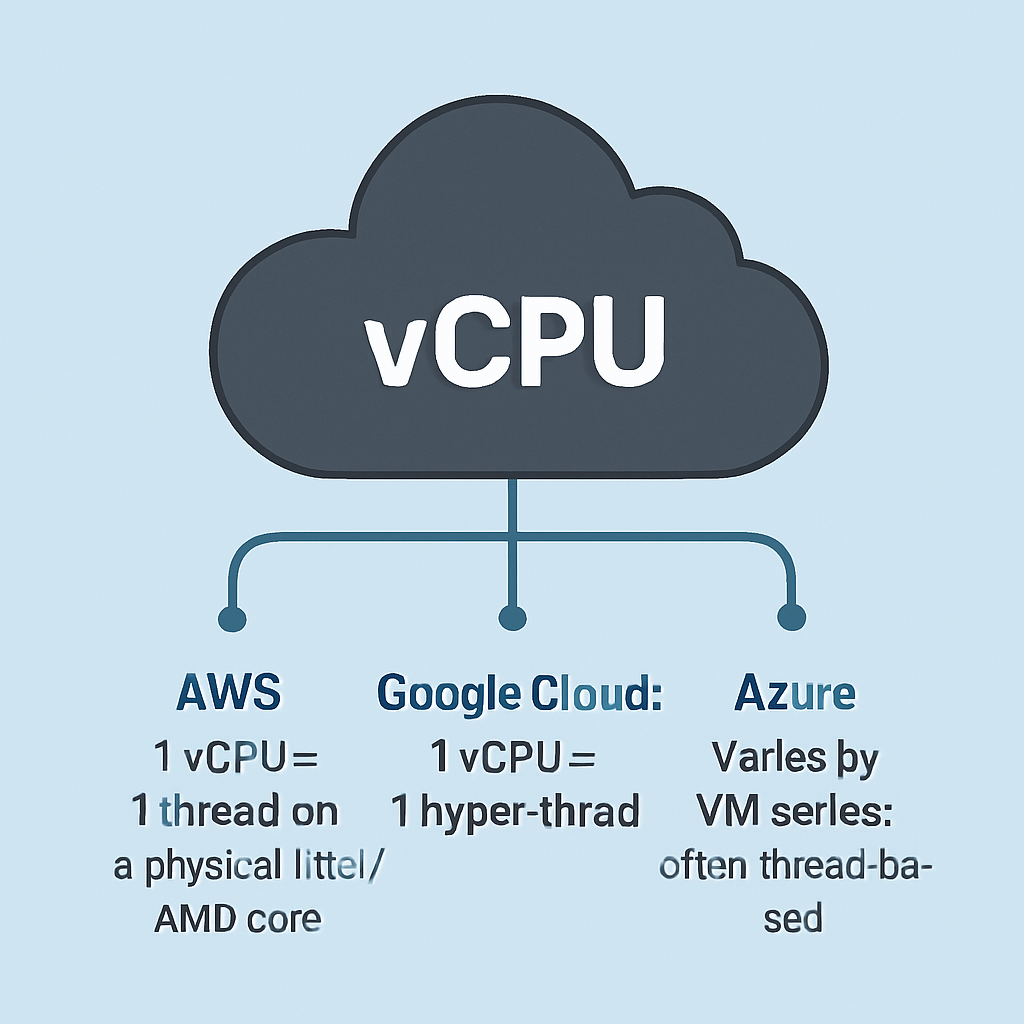
vCPU vs Core vs Thread
| Term | Description |
|---|---|
| CPU Core | A physical processor unit capable of executing instructions |
| Thread | A logical division of a core (used in hyper-threading) |
| vCPU | A virtualized representation of a thread or time slice on a physical core |
☁️ vCPUs in the Cloud
Cloud providers like AWS, Google Cloud, and Microsoft Azure define vCPUs slightly differently, but all use them as billing units. You might be charged by the hour per vCPU you allocate to a VM.
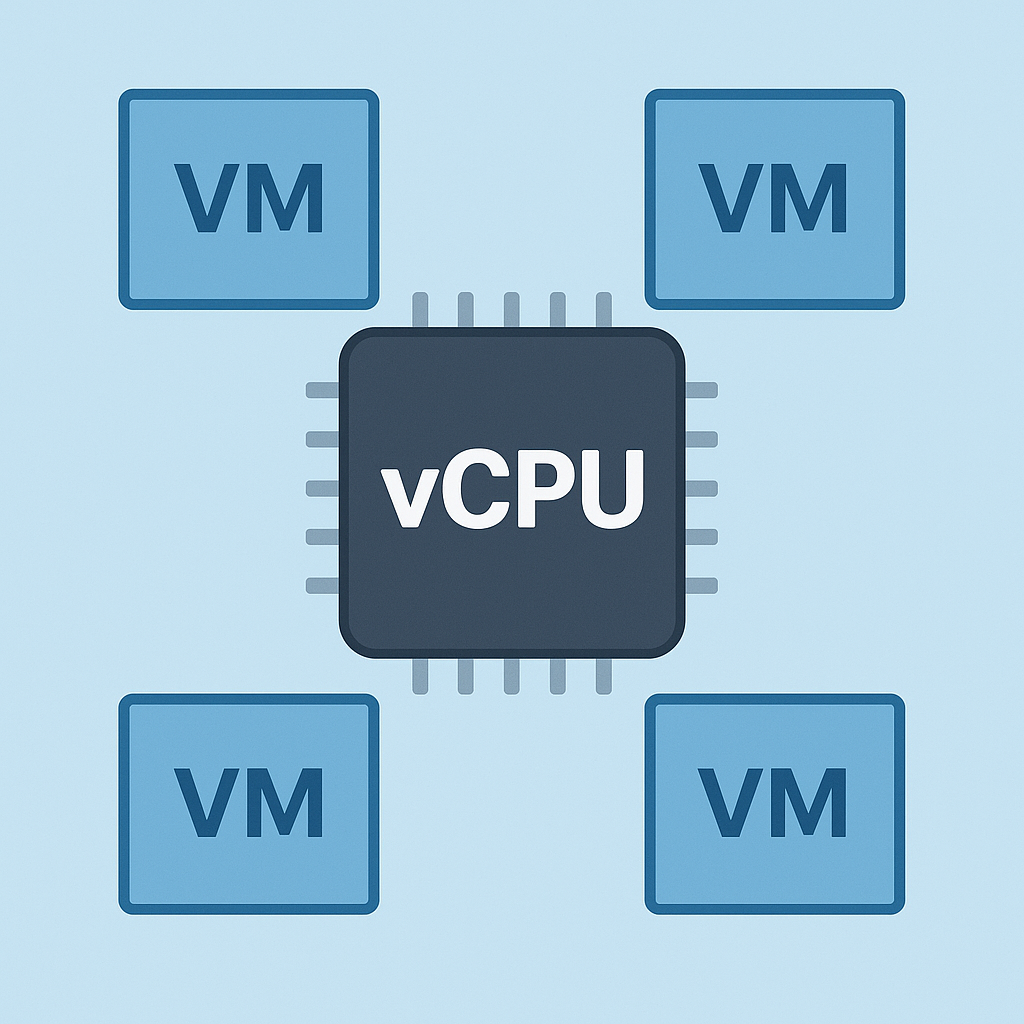
Cloud Provider Definitions:
- AWS: 1 vCPU = 1 thread on a physical Intel/AMD core
- Google Cloud: 1 vCPU = 1 hyper-thread
- Azure: Varies by VM series; often thread-based
When More vCPUs Make Sense
Adding vCPUs can improve performance for CPU-bound workloads like:
- Web servers with high traffic
- Video processing or rendering
- Machine learning training jobs
- Large SQL databases or analytics workloads
️ Performance Optimization Tips
To get the most out of your vCPUs:
- Don’t oversubscribe CPUs in latency-sensitive applications
- Balance the number of vCPUs with available memory and I/O throughput
- Use monitoring tools to observe CPU contention and steal time
Final Thoughts
Virtual CPUs (vCPUs) are the backbone of cloud and virtualization platforms. They enable you to scale applications, balance loads, and reduce hardware waste. However, **understanding how vCPUs relate to physical CPUs is critical for making cost-effective and performant infrastructure decisions**.
When provisioning VMs, don’t just choose “more vCPUs” — choose the right vCPU count for your workload and monitor its actual usage.
